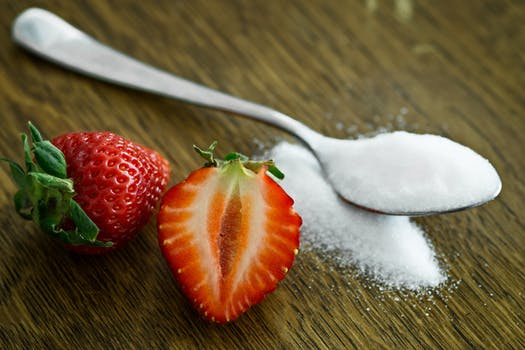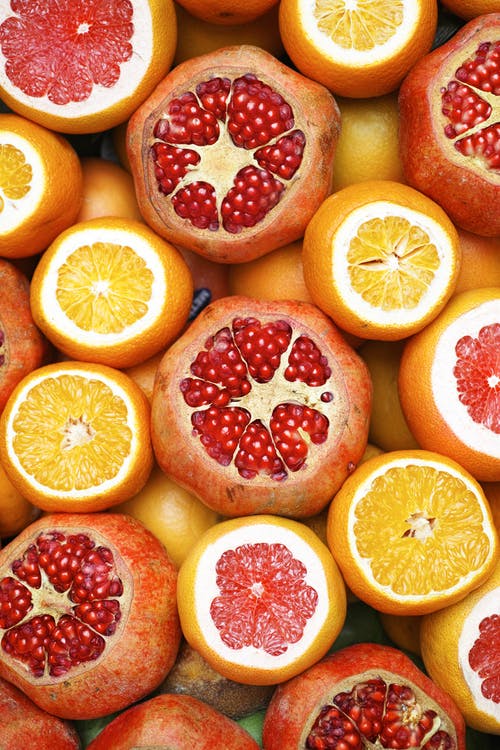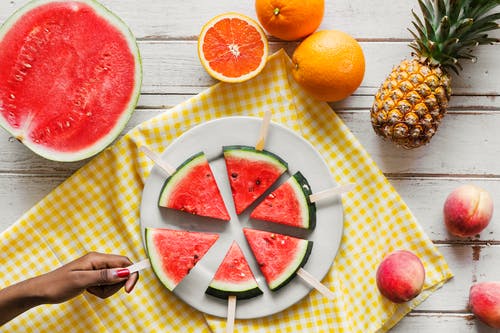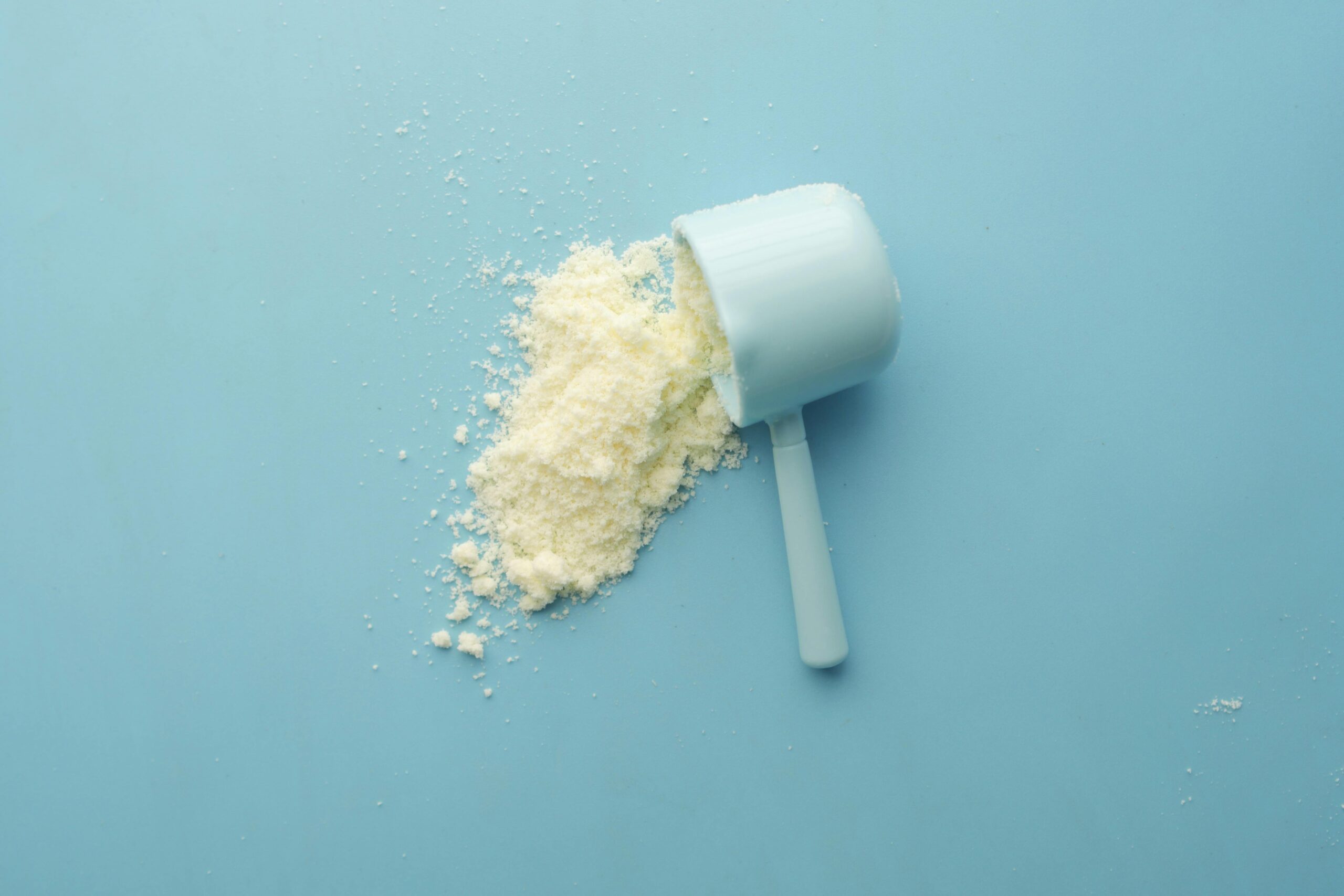It seems no food group is safe from the ever growing (and highly dubious) list of ‘don’t eat’ items and right now fruit, of all things! is bearing the brunt. A brunt which has recently come a little too close to home with more than one of my friends sharing that they have had someone-or-other ‘recommended’ they stop eating fruit. Therefore, in this post I put my hand up and strongly and proudly cast my vote in favour of keeping fruit very much on our plates, in our lunchboxes and in our bellies but not because of my opinion (self-confessed fruit lover right here) but highly backed up through the science (self-confessed science lover right here).
If you are amongst those who have been recommended to ditch the fruit, have stopped eating fruit, are still eating fruit but are confused if you should be eating fruit then you have come to the right place because in this post, we bust the number one myth behind the ‘don’t eat fruit’ movement and then once that’s out of the way get onto the more important reasons why you should be enjoying fruit as part of your every day diet.
The Myth

“Fruit is Sugar-Filled and Eating it Will Make Me Fat or Prevent Me from Losing Weight”.
The only part of this statement which is true is that fruit does indeed contain sugar. The rest is false. You know what your body runs off? Energy and you know where you get most of that energy? From the sugar containing foods you eat. At the end of the day the biggest reason you need to eat is to supply your body with energy, whether your goal is weight loss, weight maintenance or nothing to do with weight this principal holds true. What this means is that you must supply your body with the foods to get this sugar be this fruit, soft drink, muesli bars, rice, pasta, whatever you choose for this it doesn’t truly matter it’s all broken down into sugar to provide you with the energy you need to function. Where it does start to matter is when we add in the fact that our bodies need more than energy to function optimally and this means supplying them with all the extras including vitamins, minerals and non-nutritive substances which convey health benefits beyond energy (calories). Fruit is in the prime position to provide us with not only energy but also a powerhouse of these additional nutrients because they are naturally present in good quantities within fruits. Therefore, perhaps the best question to ask yourself is if you were to cut fruit from your diet what would you eat in its place? There is really nothing else you could replace fruit with that would deliver to your body the same variety of nutrients as fruit.
The fact that fruit contains sugar does not mean eating it will make you gain weight and it also does not mean it will inhibit your weight loss attempts, in fact the opposite is true and many studies show an inverse relationship between fruit consumption and weight gain meaning the more fruit people eat the less likely they are to gain weight or have weight issues1. Fruit has a low energy density due to its high-water content and it is not pure sugar therefore the way your body breaks down the sugar in fruit is very different to if you were to eat the equivalent amount of table sugar on its own or in a low fibre form (say a chocolate bar for arguments sake). The table sugar or sugar from the chocolate bar would get absorbed very quickly from your digestive system and into your blood, leaving you feeling unsatisfied (and jittery) and searching for more food to fill up your stomach and make you feel satiated. In comparison the sugar from the fruit would be released relatively slowly due to the high water and fibre (bulk) content of the fruit which also contributes to feelings of fullness and satisfaction and gives your body a steady stream of energy over a longer period than the sugar on its own.
As well as the energy supplied by fruit there are many more reasons you should be eating fruit which is why I am happy we got this ‘sugar-weight gain’ myth out of the way and we can now get into the fun stuff!
3 Important Nutritional Benefits of Eating Fruit
- Fruit is a Great Source of Antioxidants

Plants, unlike animals cannot run for cover from the harmful UV rays of the midday sun therefore they have in place their own amazing mechanisms to deal with the vast array of harsh environments they find themselves in; antioxidants. Fruits, being very important parts of plants (reproductive organs eeep) are exceptionally high in antioxidants! Therefore, when you eat fruits and the antioxidants they contain these magical abilities are transferred to you which means your body is that bit better equipped, the bit that might just make all the difference to your health outcomes, to neutralise and protect you from free radicals and damaging oxygen species produced through your everyday metabolism and wear and tear and that if left unchecked could otherwise have gone on to cause problems such as cancer.
Some commonly studied fruits especially high in antioxidants (in particular polyphenols) are berries and grapes2-4 (yes this is partly where the ‘red wine is good for you’ message originated).
2. Fruit is a Great Source of Fibre

Fruit is a great source of dietary fibre and this is important because fibre is an excellent prebiotic which helps to support the health of the good bacteria in your large intestine and therefore the overall health of your digestive system immensely. Fibre adds bulk to your poop and keeps everything moving through and protecting you against constipation and bowel cancer. The interest in the health benefits of different prebiotics is growing rapidly, and many studies link higher levels of dietary fibre (including oligosaccharides present in many fruits) intake with positive health outcomes such as decreased risk of cardiovascular disease, gastrointestinal diseases and some cancers 5-7.
3. Fruit is a Great Source of Potassium

Heard the messages to eat less salt to help with your blood pressure control and decrease your risk of cardiovascular disease? Probably a more effective strategy would be to eat more fruit because of its high potassium content which has an even greater effect on lowering blood pressure8,9.
What Does All This Mean in the Real World?

While it is interesting to know fruit contains all these wonderful nutrients that do this or that what this all translates to in the real world is the exciting part! Out here in the wide-open spaces of human existence fruit consumption is known to be associated with:
Reduced Risk Of
- All-cause mortality including cancer and cardiovascular disease6,10-15.
- Stroke16
- Type II Diabetes17
- High Cholesterol and high blood sugar18
- Inflammation2
Improved
- Gut health 5,7,19-39
- Functional health and healthy aging40,41
- Weight maintenance1
- Psychological benefits42
- Oral health43
If Fruit is that Fantastic Can I Just Eat a Heap of it and Become Super Healthy?

As wonderful as fruit is, eating fruit exclusively at the omission of all else is not going to be the healthiest diet for anyone. We’re not made for such restrictive diets, we are designed to get our nutritional needs met through eating a wide variety of foods. Fruits are high in many beneficial and essential nutrients a few of which we’ve explored within this post yet there are some key nutrients which are low in fruits and which we therefore need to obtain from other sources including zinc, iron, B12, fats and protein. The other thing to be aware of is that excessive fruit intake can also cause intestinal upset in some people including symptoms such as gas, bloating and diarrhoea. Therefore, what is important is that you neither omit entirely nor eat exclusively but rather include fruit as a part of a healthful, varied and adequate diet. We know that diets of high variety are the most healthful44 and the importance of eating a variety of foods is reflected in the Australian Dietary Guidelines (ADGs) as guideline 2. “Enjoy a wide variety of nutritious foods from the five groups every day (vegetables, fruit, grain, lean meats and their alternatives, dairy products and their alternatives”45.
How Much Should I Eat?

The answer to this question always depends on your energy needs (which is dependent on a many things including how much exercise you do, your age, weight and size). In the context of a well-rounded, variety filled and adequate diet that is meeting your needs for energy and essential nutrients it is up to you how much fruit you eat. Eat fruit to your appetite and enjoyment. The ADGs recommend at least 2 servings of fruit per day. Some examples of what a ‘serve’ looks like in terms of real food are:
1 medium piece of fruit for example a banana, apple or orange
1cup of chopped mixed fruits
2 small pieces of fruits such as kiwifruit or plums
½ cup fruit juice
1 tablespoon sultanas or 4 dried apricot halves.
The Bottom Line

What people who recommend to cut fruit from your diet mean is ‘embrace these perfect, sweet little packages of nutrients for all that they are!’ Each variety of fruit (and there are a myriad variety so you shouldn’t have trouble finding some you love) contributes its own unique array of nutrients to your body in conjunction with fibres and other non-nutritive substances like antioxidants that you just can’t get from elsewhere in quite the same way. We know that eating wholefoods is far superior to eating any isolates, pills or special formulas of these and this makes sense as we have evolved to eat foods in their entirety long before chemistry and our ability to isolate this or that component developed. There are more than likely compounds within fruits that we don’t yet know of or we don’t yet know how they help our bodies however, what is clear is that eating fruit has been shown repeatedly to be associated with health benefits, some of which is likely due to things we do not yet understand. Therefore, eat fruit, enjoy fruit with the pleasure of knowing that each bite is helping your body and to get the most out of the fruit you eat go for variety, eat mostly fresh because while the nutrient composition of 100% fruit juice is comparable to fresh fruit46 juice lacks the benefits of the fibre, even dried fruit intake has also been shown to correlate with positive health measures47 therefore if you’re looking for quick, non-perishable snacks that won’t bruise combine a handful of dried fruits with some nuts and there’s your perfect solution or better yet click this link to download my ebook Bliss 16 now and get creating with 16 different luscious bliss ball recipes that make full use of the vast array of dried fruits available and their health promoting properties!
Happy Eating.
With my whole heart I hope you found this information useful and inspiring.

Become Great. Live Great.
Bonnie.
Reference
- Alinia, S.; Hels, O.; Tetens, I. The potential association between fruit intake and body weight—A review. Obes. Rev. 2009, 10, 639–647.
- Rodriguez-Casado A. The health potential of fruits and vegetables phytochemicals: notable examples. Crit Rev Food Sci Nutr 2016;56:1097–107.
- Wightman JD, Heuberger RA. Effect of grape and other berries on cardiovascular health. J Sci Food Agric 2015;95:1584–97.
- Szajdek A, Borowska EJ. Bioactive compounds and health-promoting properties of berry fruits: a review. Plant Foods Hum Nutr 2008;63: 147–56.
- Slavin JL, Lloyd B. Health benefits of fruits and vegetables. Adv Nutr 2012;3:506–16.
- Padayachee A, Day L, Howell K, Gidley MJ. Complexity and health functionality of plant cell wall fibres from fruits and vegetables. Crit Rev Food Sci Nutr 2015.
- Slavin J. Fiber and prebiotics: mechanisms and health benefits. Nutrients 2013;5:1417–35.
- Shay CM, Stamler J, Dyer AR, Brown IJ, Chan Q, Elliott P, Zhao L, Okuda N, Miura K, Daviglus ML, Van Horn L. Nutrient and food intakes of middle-aged adults at low risk of cardiovascular disease: the international study of macro-/micronutrients and blood pressure (INTERMAP). Eur J Nutr.2012 Dec;51(8):917-26.
- Srinath Reddy K, Katan MB. Diet, nutrition and the prevention of hypertension and cardiovascular diseases. Public Health Nutr.2004 Feb;7(1A):167-86.
- He FJ, Nowson CA, MacGregor GA. Fruit and vegetable consumption and stroke: Meta-analysis of cohort studies. Lancet 2006, 367, 320–326.
- World Cancer Research Fund/American Institute for Cancer Research. Food, Nutrition, Physical Activity, and the Prevention of Cancer: A Global Perspective; AICR: Washington, DC, USA, 2007.
- Wang X, Ouyang Y, Liu J, Zhu M, Zhao G, Bao W, Hu FB. Fruit and vegetable consumption and mortality from all causes, cardiovascular disease, and cancer: Systematic review and dose-response meta-analysis of prospective cohort studies. BMJ 2014, 349, 1–14.
- Oyebode O, Gordon DV, Walker A, Mindell JS. Fruit and vegetable consumption and all-cause, cancer and CVD mortality: Analysis of Health Survey for England data. J. Epidemiol. Community Health 2014, 68, 856–862.
- Wakai K,Matsuo K,Nagata C, Mizoue T, Tanaka K, Tsuji I, Sasazuki S, Shimazu T, Sawada N, Inoue M, Tsugane S. Lung Cancer Risk and Consumption of Vegetables and Fruit: An Evaluation Based on a Systematic Review of Epidemiological Evidence from Japan. Japanese Journal of Clinical Oncology. 1 May 2011:41(5);693–708.
- Miller V, Mente A, Dehghan S, Rangarajan S, Zhang X, Swaminathan S, Dagenais G, Gupta R, Mohan Y, Lear S et al. Fruit, vegetable, and legume intake, and cardiovascular disease and deaths in 18 countries (PURE): A prospective cohort study. Lancet 2017, 390, 2037–2049.
- He FJ, Nowson CA, MacGregor GA. Fruit and vegetable consumption and stroke: meta-analysis of cohort studies. Lancet.2006 Jan 28;367(9507):320-6.
- Anhê FF, Desjardins Y, Pilon G, Dudonné S, Genovese MI, Lajolo FM, Marette A. Polyphenols and type 2 diabetes: a prospective review. PharmaNutrition 2013;1:105–14.
- Lim SS, Vos TA. comparative risk assessment of burden of disease and injury attributable to 67 risk factors and risk factor clusters in 21 regions, 1990–2010: A systematic analysis for the Global Burden of Disease Study 2010. Lancet 2012, 380, 2224–2260.
- Rodriguez-Casado A. The health potential of fruits and vegetables phytochemicals: notable examples. Crit Rev Food Sci Nutr 2016;56:1097–107.
- Anhê FF, Varin TV, Le Barz M, Desjardins Y, Levy E, Roy D, Marette A. Gut microbiota dysbiosis in obesity-linked metabolic diseases and prebiotic potential of polyphenol-rich extracts. Curr Obes Rep 2015;4: 389–400.
- U.S. Department of Health and Human Services and U.S. Department of Agriculture. Dietary Guidelines for Americans 2015–2020. Available online: http://health.gov/dietaryguidelines/2015/guidelines/ (accessed on 2 Febuary 2019).
- Veronese N, Solmi M, Caruso MG, Giannelli, MG, Osella AR, Evangelou E, Maggi S, Fontana L, Stubbs B, Tzoulaki I. Dietary fiber and health outcomes: An umbrella review of systematic reviews and meta-analyses. Am. J. Clin. Nutr. 2018, 107, 436–444.
- Deehan EC, Walter J. The fiber gap and disappearing gut microbiome: Implications for human health. Trends Endocrinol. Metab. 2016, 27, 239–241.
- Lie L, Brown L, Forrester TE, Plange-Rhule, J, Bovet P, Lambert EV, Layden BT, Luke A, Dugas A. The association of dietary fiber intake with cardiometabolic risk in four countries across the epidemiologic transition. Nutrients 2018, 10;628.
- Rivière A, Selak M, Lantin D, Leroy F, De Vuyst L. Bifidobacteria and butyrate-producing colon bacteria: Importance and strategies for their stimulation in the human gut. Front. Microbiol Nutrients 2018. 10(1833):37-54.
- Wang F, Yu T, Huang G, Cai D, Liang X Su, H Zhu Z, Li D, Yang Y, Shen P et al. Gut microbiota community and its assembly associated with age and diet in Chinese centenarians. J. Microbiol. Biotechnol. 2015. 25:1195–1204
- Klurfeld DM, Davis CD, Karp RW, Allen-Vercoe E, Chang EB, Chassaing B, Fahey GV, Hamaker BR, Holscher HD, Lampe JW et al. Considerations for best practices in studies of fiber or other dietary components and the intestinal microbiome. Am. J. Physiol. Endocrinol. Metab. 2018.
- Schmier JK, Miller PE, Levine JA, Perez V, Maki KC, Rains TM, Devareddy L, Sanders LM, Alexander DD. Cost savings of reduced constipation rates attributed to increased dietary fiber intakes: A decision-analytic model. BMC Public Health 2014. 14;374.
- Kashtanova DA, Popenko AS, Tkacheva ON, Tyakht AB, Alexeev DG, Boytsov SA. Association between the gut microbiota and diet: Fetal life, early childhood, and further life. Nutrition 2016. 32;620–627.
- Williams, B.A.; Grant, L.J.; Gidley, M.J.; Mikkelsen, D. Gut fermentation of dietary fibres: Physico-chemistry of plant cell walls and implications for health. Int. J. Mol. Sci. 2017. 18;2203.
- Low DY, Williams BA, D’Arcy BR, Flanagan BM, Gidley MJ. In vitro fermentation of chewed mango and banana: Particle size, starch and vascular fibre effects. Food Funct. 2015. 6;2464–2474.
- Tuohy KM, Conterno L, Gasperotti M, Viola R. Up-regulating the human intestinal microbiome using whole plant foods, polyphenols, and/or fiber. J. Agric. Food Chem. 2012, 60;8776–8782.
- Tap J, Furet JP, Bensaada M, Philippe M, Roth H, Rabot S, Lakhdari O, Lombard V, Henrissat B, Corthier G et al. Gut microbiota richness promotes its stability upon increased dietary fibre intake in healthy adults. Environ. Microbiol. 2015. 17;4954–4964.
- O’Keefe JD, Li JV, Lahti L, Ou J, Carbonero F, Mohammed K, Posma JM, Kinross J, Wahl E, Ruder E et al. Fat, fiber and cancer risk in African Americans and rural Africans. Nat. Commun. 2015. 6;6342.
- De Filippis F, Pellegrini N, Vannini L, Jeffery IB, La Storia A, Laghi L, Serrazanetti DI, Di Cagno R, Ferrocino I, Lazzi C et al. High-level adherence to a Mediterranean diet beneficially impacts the gut microbiota and associated metabolome. Gut 2016. 65;1812–1821.
- Garcia-Mantrana I, Selma-Royo M, Alcantara C, Collado MC. Shifts on gut microbiota associated to Mediterranean Diet adherence and specific dietary intakes on general adult population. Front. Microbiol. 2018. 9;890.
- Hjorth MF, Beaedel , Bendtsen LQ, Lorenzen JK, Holm JB, Killerich P, Roager HM, Kristiansen K, Larsen LH, Astrup A. Prevotella-to-Bacteroides ratio predicts body weight and fat loss success on 24-week diets varying in macronutrient composition and dietary fiber: Results from a post-hoc analysis. Int. J. Obes. (Lond.) 2018.
- Tabernero M, Venema K, Maathuis AJH, Saura-Calixto FD. Metabolite production during in vitro colonic fermentation of dietary fiber: Analysis and comparison of two European diets. J. Agric. Food Chem. 2011. 59;8968–8975.
- Klinder A, Shen Q, Heppel S, Lovegrove JA, Rowland I, Tuohy KM. Impact of increasing fruit and vegetables and flavonoid intake on the human gut microbiota. Food Funct. 2016. 7;1788–1796.
- Myint PK, Welch AA, Bingham SA, Surtees PG, Wainwright NW, Luben RN, Wareham NJ, Smith RD, Harvey IM, Day NE, Khaw KT.Fruit and vegetable consumption and self-reported functional health in men and women in the European Prospective Investigation into Cancer-Norfolk (EPIC-Norfolk): a population-based cross-sectional study.Public health nutrition. 2007. 10(1);34-41.
- Dreher ML. Connection between fiber, colonic microbiota, and health across the human life cycle. In Dietary Fiber in Health and Disease; Springer International Publishing AG: Basel, The Switzerland. 2018;67–93.
- Conner TS, Brookie KL, Carr AC, Mainvil LA, Vissers MCM (2017) Let them eat fruit! The effect of fruit and vegetable consumption on psychological well-being in young adults: A randomized controlled trial. PLoS ONE 12(2). e0171206.
- Nanri H1,2, Yamada Y3,4,5, Itoi A6, Yamagata E7, Watanabe Y8,9, Yoshida T10,11, Miyake M12, Date H13, Ishikawa-Takata K14, Yoshida M15, Kikutani T16, Kimura M17,18. Frequency of Fruit and Vegetable Consumption and the Oral Health-Related Quality of Life among Japanese Elderly: A Cross-Sectional Study from the Kyoto-Kameoka Study. Nutrients.2017 Dec 15. 9(12);E1362.
- Yokoyama Y, Nishi M, Murayama H, Amano H, Taniguchi Y, Nofuji Y, Narita M, Matsuo E, Seino S, Kawano Y, Shinkai S. Association of Dietary Variety with Body Composition and Physical Function in Community-dwelling Elderly Japanese. J Nutr Health Aging.2016;20(7):691-6.
- Nutrition Publications. The Australian Dietary Guidelines 1-5. The Department of Health. Australian Government. [Accessed 2 February 2019] Available Online: http://www.health.gov.au/internet/main/publishing.nsf/Content/health-pubhlth-strateg-food-resources.htm.
- Byrd-Bredbenner C, Ferruzz MG, Fulgoni VL, Murray R, Pivonka E, Wallace TC. Satisfying America’s fruit gap: Summary of an expert roundtable on the role of 100% fruit juice. J. Food Sci. 2017. 82;1523–1534.
- Keasta DR, O’Neilb CE, Jonesc JM. Dried fruit consumption is associated with improved diet quality and reduced obesity in US adults: National Health and Nutrition Examination Survey, 1999-2004. a Food & Nutrition Database Research, Inc, Okemos, MI 48864, USA b School of Human Ecology, Louisiana State University Agricultural Center, Baton Rouge, LA 70803, USA c Department of Family, Consumer and Nutritional Sciences, St Catherine University, St Paul, MN 55112, USA. Nutrition Research 29 May 2011. 31;460–467.




8 thoughts on “Is Fruit Good For You?”
Wow, this was usefull. Keep writing this kind of blogs, you will get a lot of people to this text if you continue writing this. I will be coming back this website more often. thanks again
Thank you so much Fletcher for taking the time to let me know you found this blog post valuable!
It really is wonderful to know my words are reaching people and helping <3
Please feel free to contact me if you have any specific questions or simply enjoy reading future posts at the moment I am putting one a week as the research behind them takes me quite awhile <3
Wow, this was cool. Keep writing this kind of blogs, you will get a lot of people to this post if you continue writing this. I will be visiting this domain more often. thanks again
Thank you Jaime,
You are so welcome and thank you for your feedback 🙂 I am really happy to know that you found the information in this post useful and that you will be visiting my site often. I will be covering many more nutrition and health topics like this and please feel free so contact me with any area you would like information on.
Hey! I could have sworn I’ve been to this site before but after reading through some of the post I realized it’s new to me. Nonetheless, I’m definitely happy I found it and I’ll be book-marking and checking back often!
Thank you, I am happy to know you’re finding my information useful.
Good Afternoon, I am a PR assistant at Peaches and Screams and I am reaching out to offer you to publish some of our product reviews and guides on your website. We are working hard to grow our brand so we thought that publishing articles on your website would help us to achieve exactly that whilst at the same time contributing unique and interesting content to your website. When I was reviewing your website, I thought that your visitors would enjoy reading articles on these subjects. In writing up our articles, we have chosen the top selling products from our store! All articles are 100 unique and have not been published elsewhere 🙂 I have formatted all the articles and have saved each one inside a Word document. I have also added a folder with our banners that you can use with the blog posts. I have included articles on 1) product reviews and 2) guides. You can find everything inside my Google drive: https://drive.google.com/drive/folders/1uqBagrItiLVhh5glpvqBuyOxcI4AJzCR?usp=sharing I would be most grateful if you could credit each article to April Lord from Peaches and Screams (https://peachesandscreams.co.uk) Likewise, if you have some interesting articles, do hit us up on our Facebook page (https://www.facebook.com/peachesandscreamsuk/) and we could publish those for you 🙂 Thanks for your time and have a fab day! Kind regards, April Lord
Hi April, Thank you for the offer but I have to decline as it’s not really in line with the services I offer. Best of luck with your endeavours 🙂